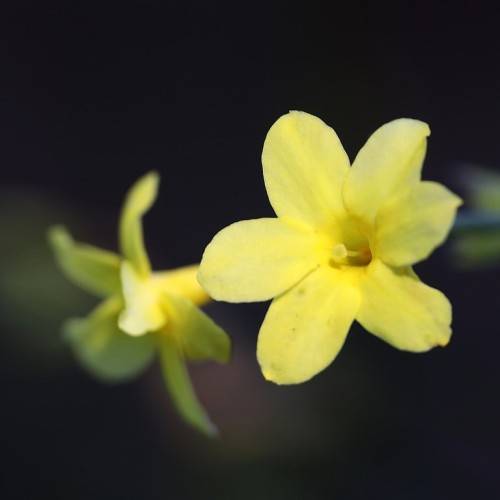
winter jasmine
Jasminum nudiflorum
Cycle:
Perennial
Watering:
Average
Hardiness Zone:
6 - 10
Flowers:
Flowers
Sun:
Full sun,part shade
Soil:
Well-drained
Fruits:
Fruits Ready In
Leaf:
Yes
Growth Rate:
Moderate
Maintenance:
Low
Drought Tolerant:
Yes
Care Level:
Medium
watering
Winter jasmine should be watered on a regular basis, but not too frequently. During the summer months, it should receive about 1 inch of water every week. In the winter months, it should only be watered when the top 2-3 inches of soil are dry to the touch. Additionally, water should be applied directly to the soil and not to the leaves or stems. If possible, use a soaker hose when watering winter jasmine to ensure the roots are adequately hydrated.
sunlight
Winter jasmine needs full sun to 5 hours of direct sunlight per day during autumn and winter, and can tolerate partial shade in summer. It does best in well-drained, slightly acidic soil. During autumn and winter, the plant prefers cool temperatures, ideally between 10-15 °C (50-59 °F). During spring and summer months, it should be kept in an area that receives partial shade or shelter from any strong afternoon sunlight as this can cause scorching and wilting of the flowers.
pruning
Winter jasmine should be pruned in late summer or early fall, after the plant has finished flowering. Pruning should involve removing damaged, dead, or weak branches and stems to promote good air circulation. When pruning, don’t remove more than 1-third of the plant. If you need to do more pruning, spread it out over several years. By doing this, you’ll be able to maintain the shrub’s natural shape and promote more flowering.
